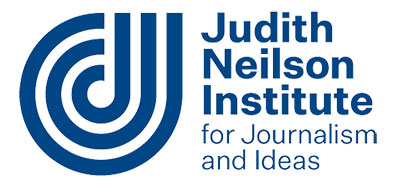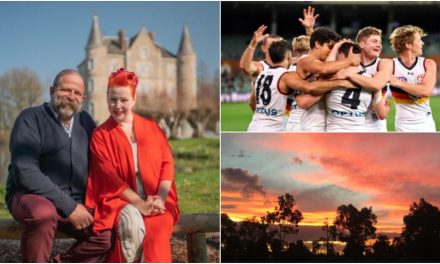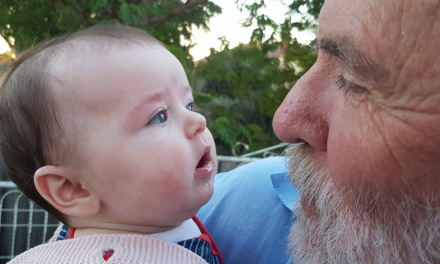Former Carlton coach Brendon Bolton (centre) captain-coached North Hobart to the 2003 SFL premiership. Photo: SUPPLIED
In 2013, the AFL forced a name change on the 132-year-old North Hobart Football Club, calling it Hobart City as part of a “rationalisation”. After four years of struggle, a group of supporters led by current president Craig Martin re-took control of their club. In the decade before the name change, North Hobart had made a cumulative profit of $300,000. Four years later, it was left with a debt of more than $100,000, and the number of its paying members had dropped to 75. It had no cash sponsors and at its first training for 2017, only 10 players turned up. The club was in a death spiral. Now North is once again viable with over 500 members and more than 60 players on its books as well as a women’s team. It has a young, proud team and strong under 18s. I spoke at a North Hobart club function last Sunday.
I often say, Australian football is a world-class game played by a tiny fraction of the world’s population.
When I say it is a world-class game, I mean that a great game of Australian football can be as absorbing, as exciting as a great Test cricket match played not between two clubs but two nations. I’ve seen AFL grand finals no less absorbing, or exciting, than FA Cup finals, than rugby union internationals.
From its early days, Australian football was recognised as a great game. In 1920, the author of the Sherlock Holmes mysteries, Sir Arthur Conan Doyle, visited Melbourne and attended the VFL grand final of that year between Collingwood and Richmond.
Sir Arthur was a keen sportsman. “I know something about football”, he said, “for I played rugby for the Edinburgh University and soccer with the Hampshire team. I have also seen the best American football. I consider the Australian game is magnificent, and from the spectacular point of view it is probably the best of them all.”
Sir Arthur said that of all the football codes, Australian football is the most athletic. The same point was made to me decades later by Carlton’s great star of the 1960s and ‘70s, Alex Jesaulenko.
He had arrived in Australia as a four-year-old migrant with a talent for all sports, including gymnastics. After trying soccer and rugby union, “Jezza” opted to play Australian football because, to his eye, it was the most athletic of the football codes. He went on to take what has been called the “Mark of the Century” in the epic grand final of 1970 between Carlton and Collingwood.
Ours is a game with tremendous folklore. Recently, I met, for the first time, two of my Flanagan cousins – two women, one 80, the other approaching that age. One of them had brought an account written by their father – my father’s older brother, Harold – of the best football match he had ever seen. It was written as a letter to the local newspaper in the 1960s.
The game that possessed his memory had been played 36 years earlier – the 1928 state final between the City club (now called South Launceston) and North Hobart, played at Launceston’s York Park.
City were led by the legendary Roy Cazaly, North by club legend Jack Dunn. The story uncle Harold told – politely, I might add – was that Dunn collected a young City player early, inflaming the home crowd. Cazaly evened up at the start of the last quarter, putting down Dunn. City rallied and won.
A local boxer in the crowd wanted to further the matter with Dunn as he walked off the ground. Cazaly put his arm around the North Hobart captain-coach and the pair walked off together in what Uncle Harold described as the spirit of good sportsmanship.
Reading Uncle Harold’s report, I felt the reverberations of the game 92 years after it was played, the drama of the day, the two giants of the occasion leaving the arena arm-in-arm.
PLEASE HELP US CONTINUE TO THRIVE BY BECOMING AN OFFICIAL FOOTYOLOGY PATRON. JUST CLICK THIS LINK.
We need to remember that Australian football is a product of the 19th century. A variety of factors unique to the 19th century combined to create what is called “the first game” played between Melbourne Grammar and Scotch College on the slope above the MCG.
That was 1858. North Hobart Football Club started in 1881. Its first team photo was taken among the gum trees on the Hobart domain.
A lot has changed since the 19th century and a lot more is about to change as we plunge ever further into the uncertainties of the 21st century.
The first question administrators of this game should ask themselves is this: “What must I do to ensure my grandkids get to enjoy this game as much as I have?”
I’m not going to pretend I know exactly what needs to be done in each and every instance, but I do know there is one thing you don’t do. You don’t take the most famous club in one of the game’s foundation states and change its name to something bland and instantly forgettable. That is football bureaucracy gone mad. You don’t damage the identity of our famous clubs. The identity of our famous clubs is one of our assets.
In terms of keeping the game alive, we have fewer assets than we had, say, 30 years ago. Last month, I was driven through north-east Tasmania by a mate who played a lot of football up there in the 1970s and ‘80s.
All but one of the clubs he talked about are gone. From all around Australia, I hear stories about how grassroots footy is struggling, and that is why North Hobart Football Club matters.
If the game dies at the grass roots, the game will die. North Hobart is a rare story of footy regeneration. In the future – in the near future, I suspect – we’re going to need all the stories of footy regeneration we can get.
I didn’t come here today to denounce the AFL. I think, as an organization, they have done a good job in managing to make the 2020 AFL season happen. We needed it. The game needed it.
But I do say to the AFL Commission and those who enact its vision, like AFL chief executive Gil McLachlan: you are derelict in your duty if you don’t start listening to clubs like North Hobart.
Stop pretending that people in offices know more about the game and how it is faring than the people doing the work at the grassroots. To those in the North Hobart club, men and women, I say congratulations. What you are doing matters to lovers of the game all over Australia. Go North Hobart!













Are there a lot of new clubs popping up on urban fringes too?
Always wondered what response you gained from the AFL following 2018 Norm Smith oration?